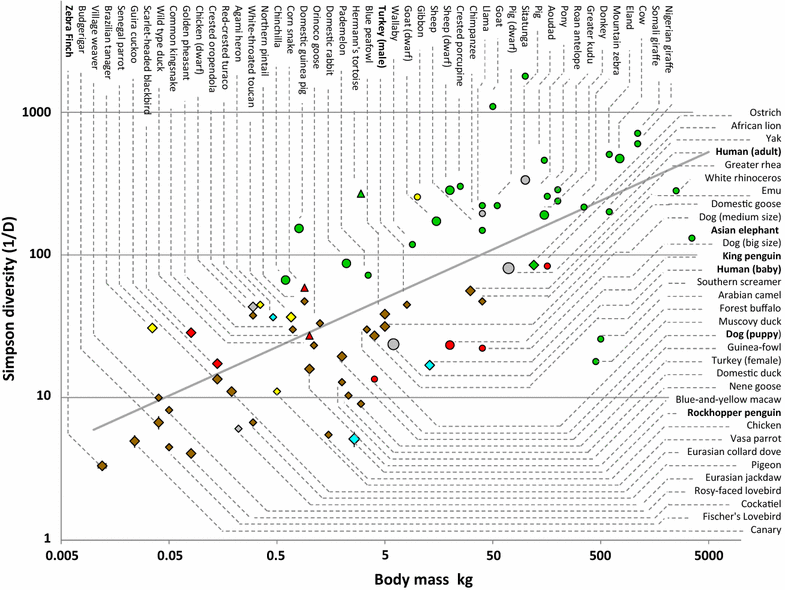Vertebrate bacterial gut diversity: size also matters
- PMID: 27008566
- PMCID: PMC4804487
- DOI: 10.1186/s12898-016-0071-2
Vertebrate bacterial gut diversity: size also matters
Abstract
Background: One of the central issues in microbial ecology is to understand the parameters that drive diversity. Among these parameters, size has often been considered to be the main driver in many different ecosystems. Surprisingly, the influence of size on gut microbial diversity has not yet been investigated, and so far in studies reported in the literature only the influences of age, diet, phylogeny and digestive tract structures have been considered. This study explicitly challenges the underexplored relationship connecting gut volume and bacterial diversity.
Results: The bacterial diversity of 189 faeces produced by 71 vertebrate species covering a body mass range of 5.6 log. The animals comprised mammals, birds and reptiles. The diversity was evaluated based on the Simpson Diversity Index extracted from 16S rDNA gene fingerprinting patterns. Diversity presented an increase along with animal body mass following a power law with a slope z of 0.338 ± 0.027, whatever the age, phylogeny, diet or digestive tract structure.
Conclusions: The results presented here suggest that gut volume cannot be neglected as a major driver of gut microbial diversity. The characteristics of the gut microbiota follow general principles of biogeography that arise in many ecological systems.
Keywords: Biodiversity; Biogeography; Fingerprint; Gut; Species-area relationship.
Figures

References
-
- MacArthur RH, Wilson EO. The theory of island biogeography. Princet Univ Press Monogr Popul Biol. 1967;1:202.
-
- Arrhenius O. Species and area. J Ecol. 1921;9:95–99. doi: 10.2307/2255763. - DOI
Publication types
MeSH terms
LinkOut - more resources
Full Text Sources
Other Literature Sources

